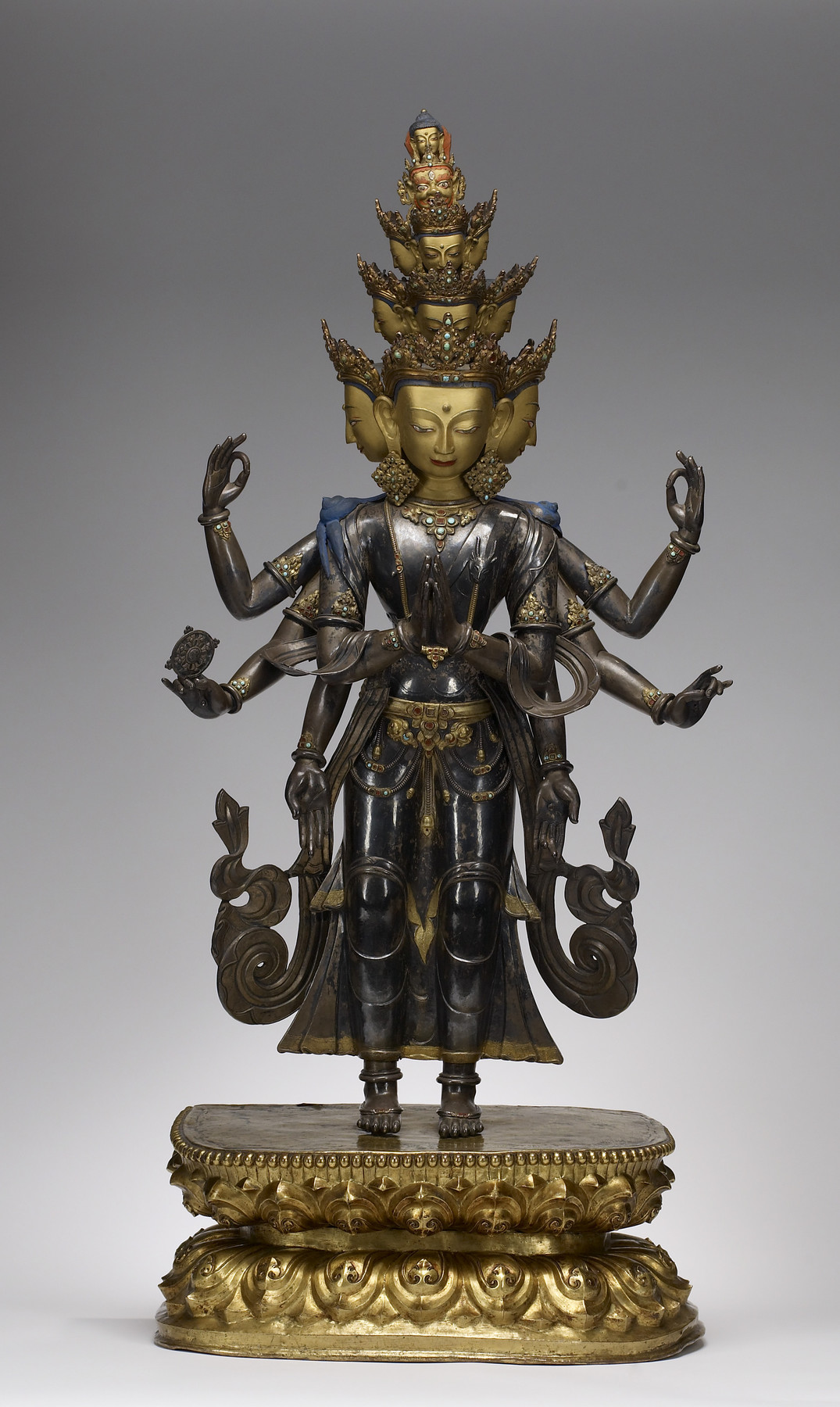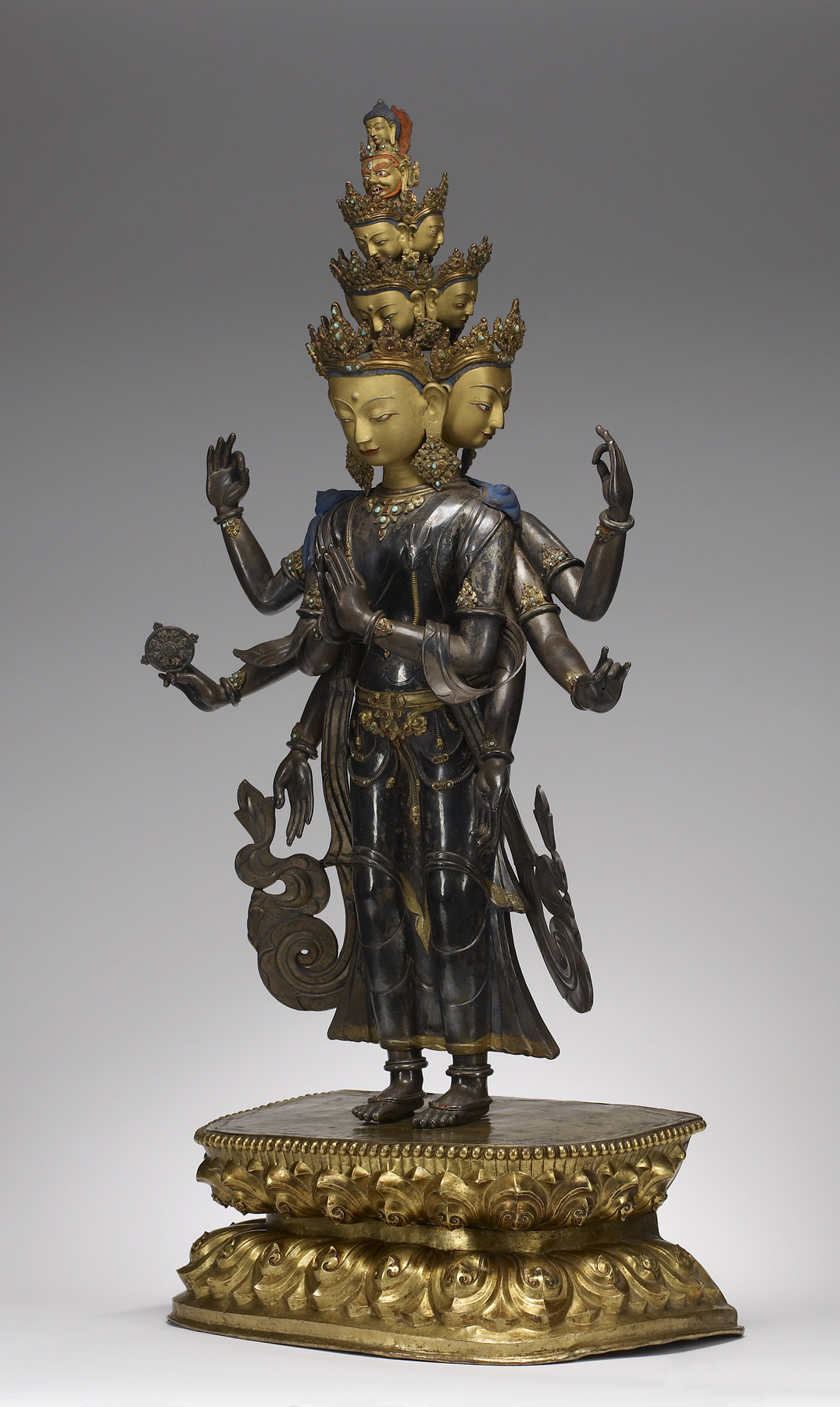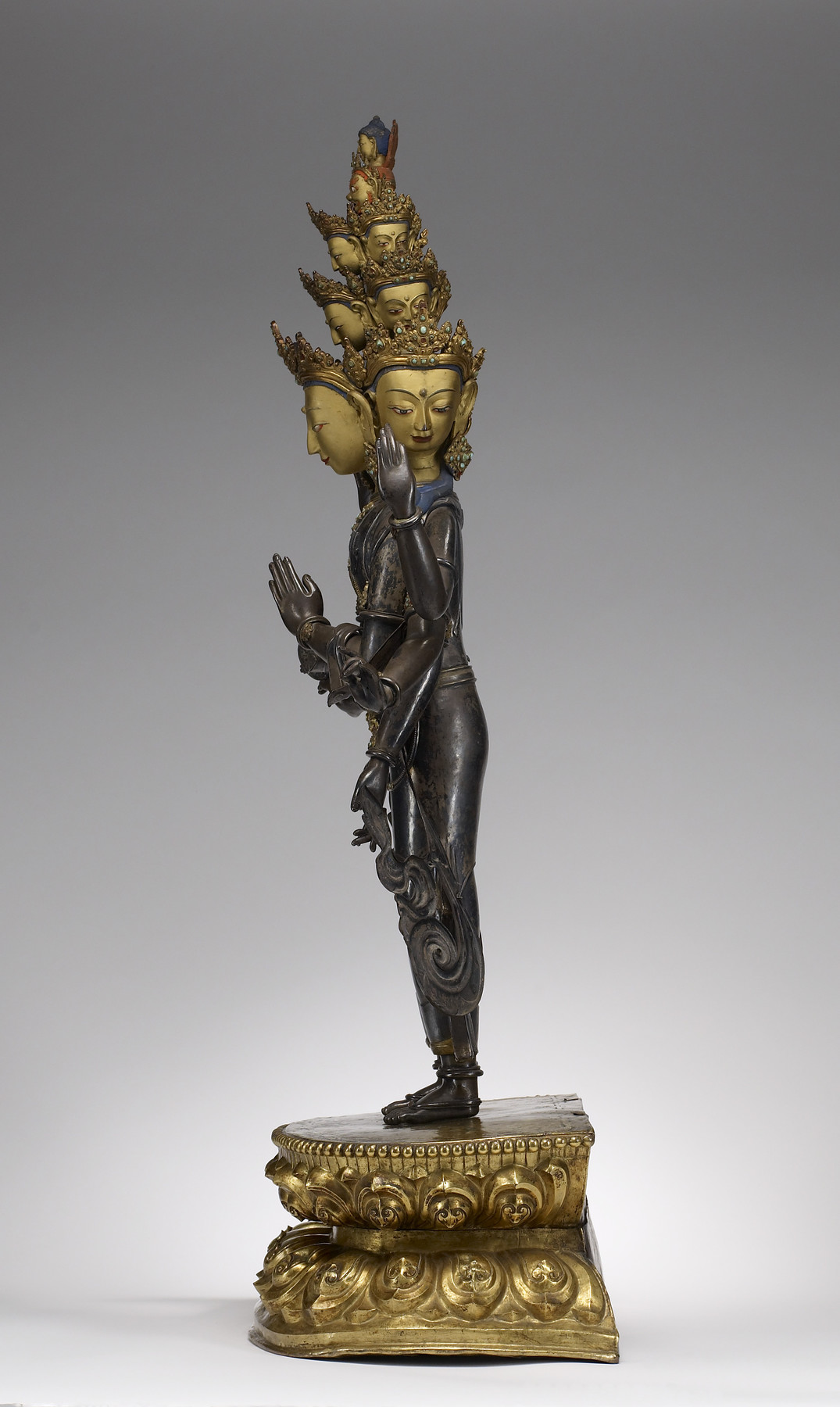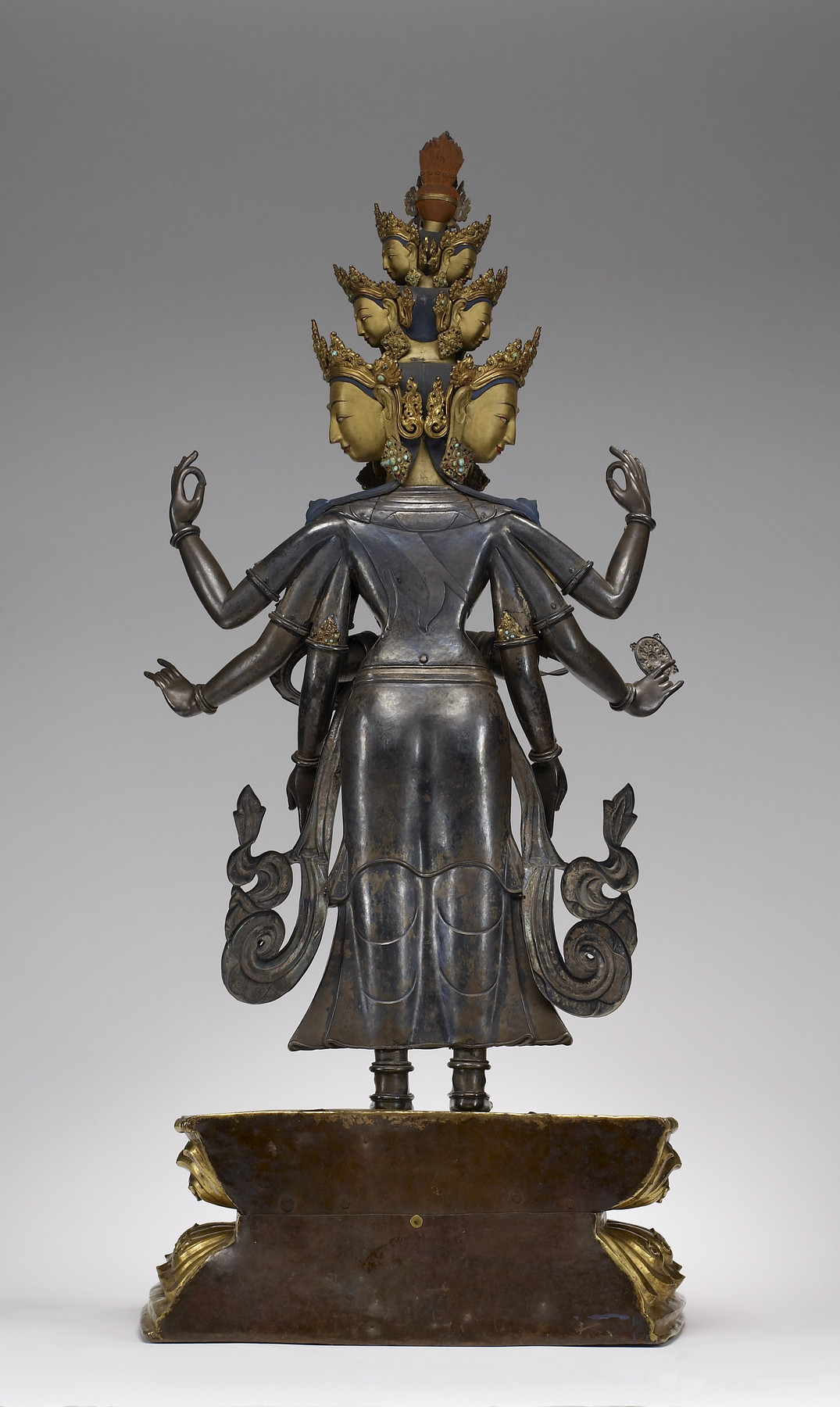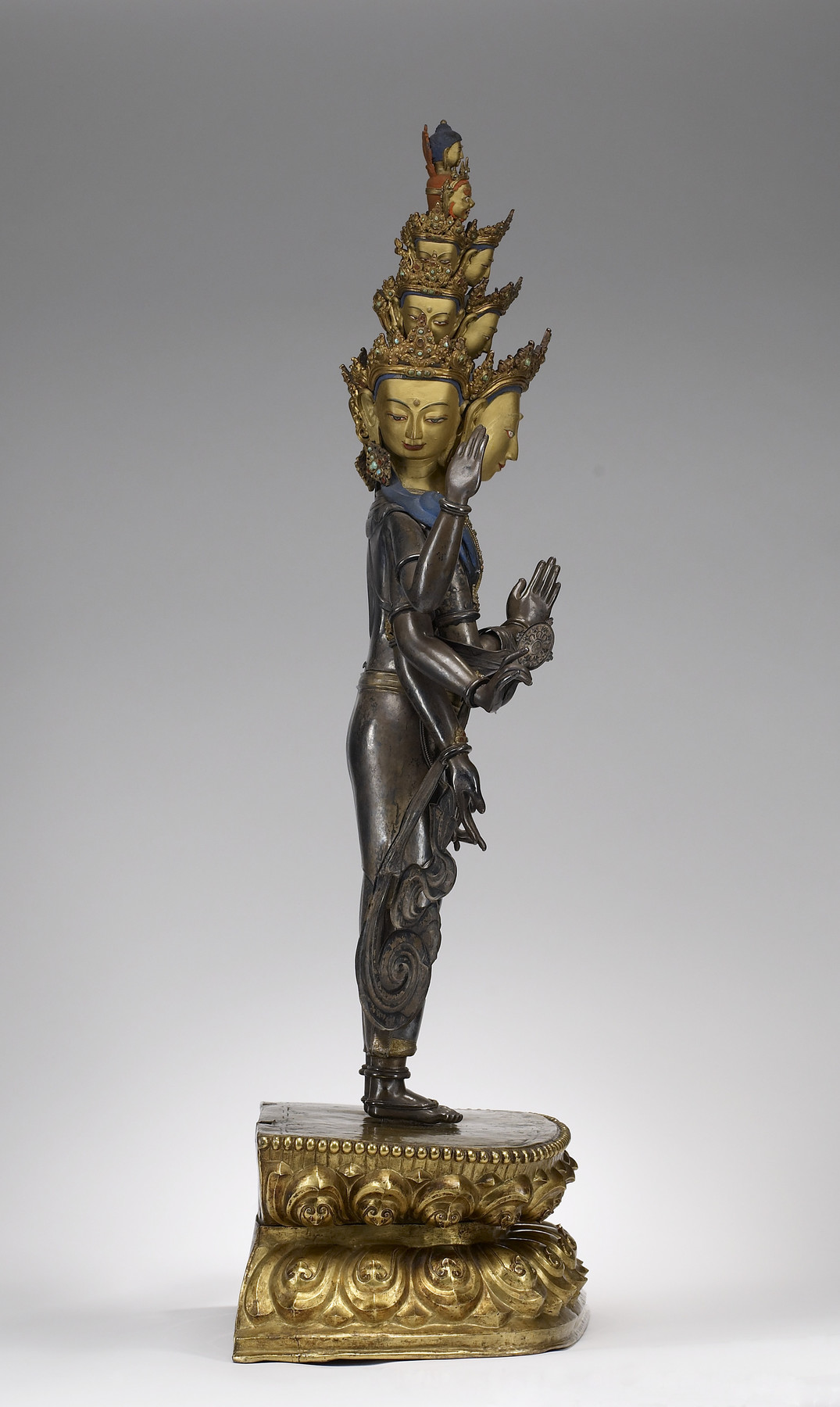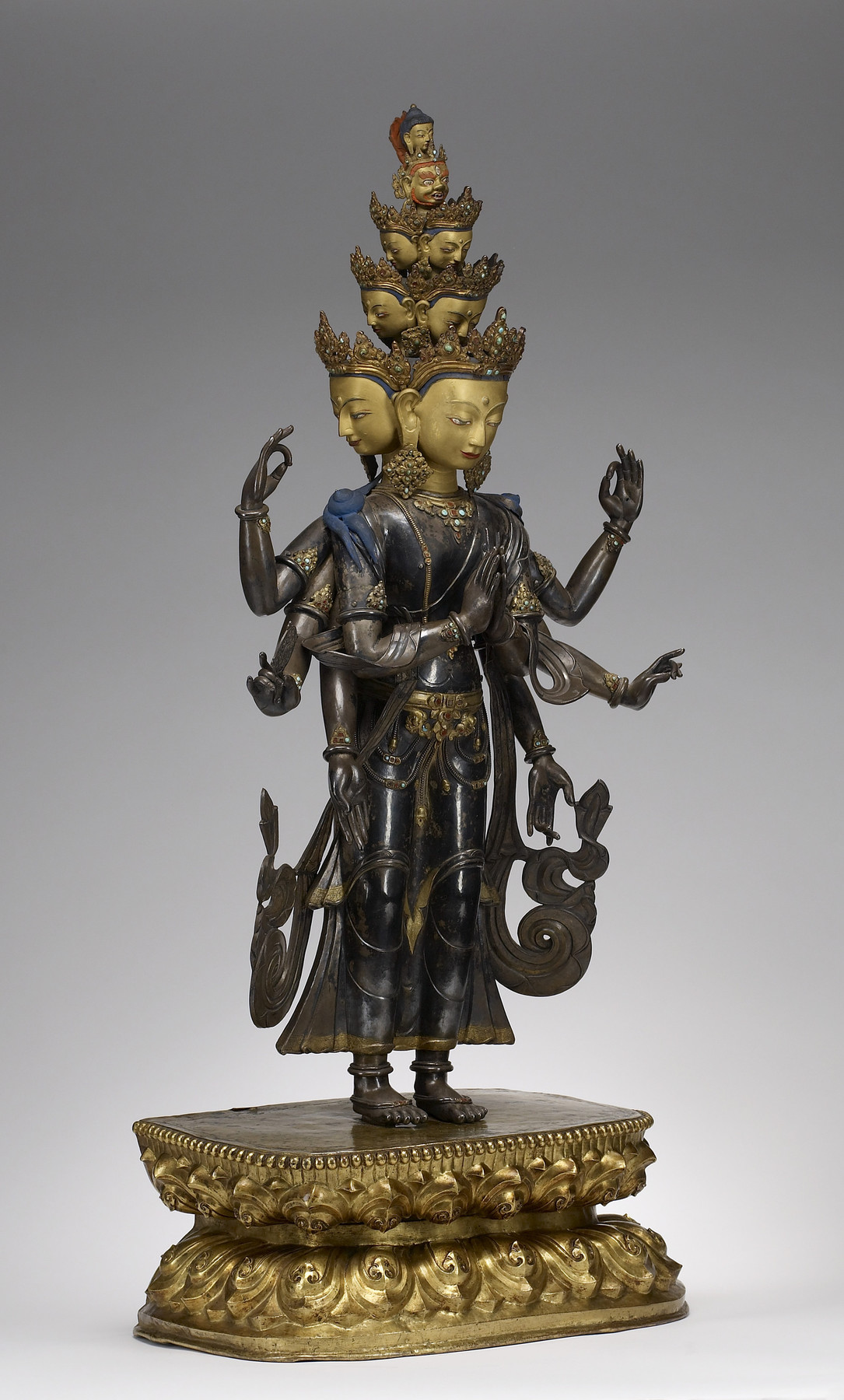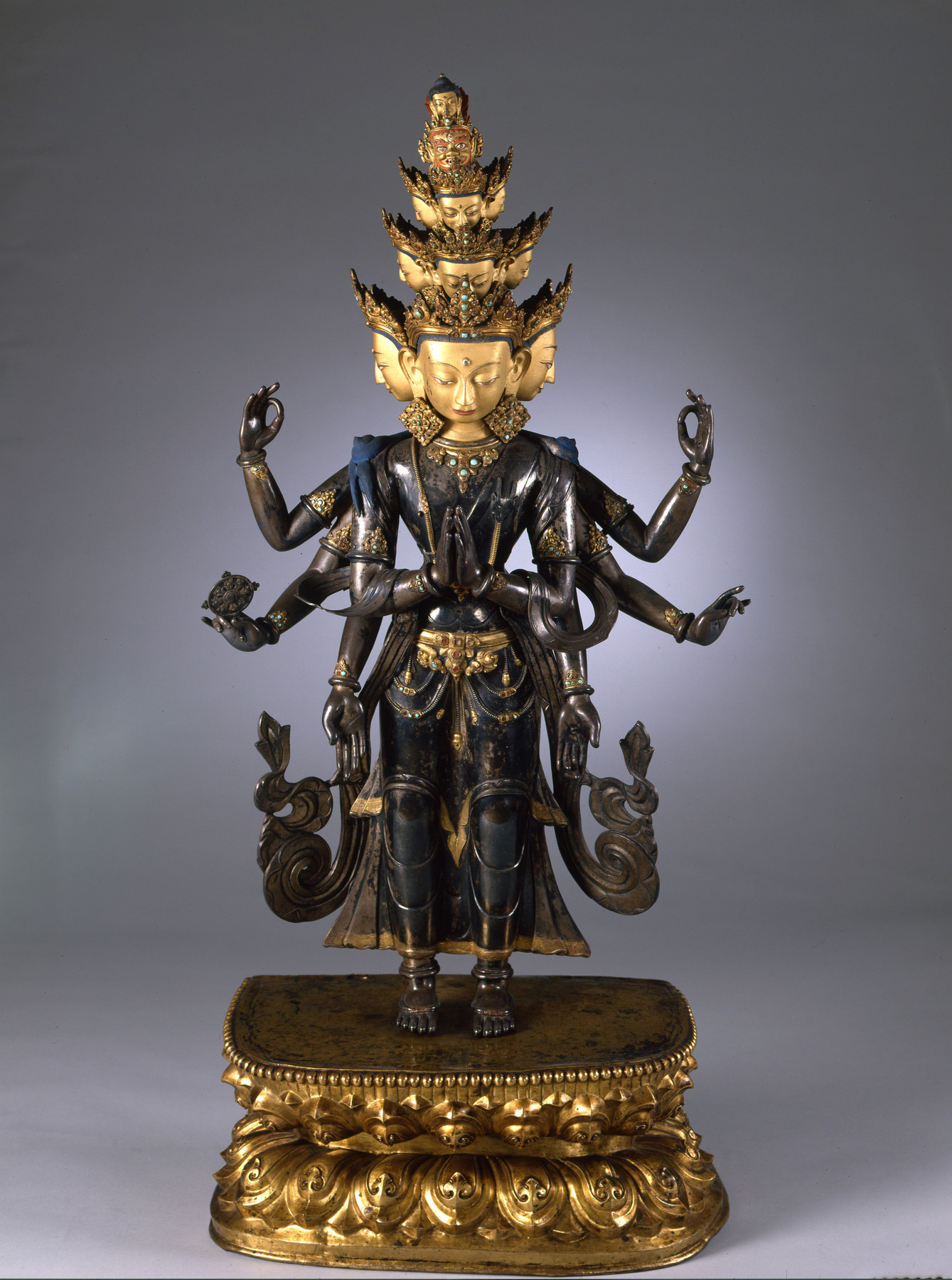Eleven-Headed Avalokiteshvara
(India, Nepal, and Tibet)
More than 200 years ago, a Buddhist abbot (head monk) or lama sealed dozens of tightly rolled scrolls with sacred texts within this hollow sculpture. The offering of these texts was part of a multi-step ritual to consecrate the sculpture so that the bodhisattva Avalokiteshvara, the Lord of Compassion, would inhabit it. Although the scrolls were not meant to be visible, paper inscribed with black and red ink can be seen through small holes at the back of the base.
Avalokiteshvara is portrayed with eight arms, representing the eight directions, and eleven heads, which also signify the eight directions as well as the three vertical divisions of top, middle, and bottom. The heads are arranged in a pyramid with three rows, ten of the heads peaceful and one ferocious representing Avalokiteshvara’s angry form, which is capped by the peaceful Buddha head of Amitabha.
Provenance
Provenance (from the French provenir, 'to come from/forth') is the chronology of the ownership, custody, or location of a historical object.
Rudolph Antiques, New York; purchased by John and Berthe Ford, Baltimore, February 7 1968; given to Walters Art Museum, 2012.
Exhibitions
| 2001-2003 | Desire and Devotion: Art from India, Nepal, and Tibet in the John and Berthe Ford Collection. The Walters Art Museum, Baltimore; Santa Barbara Museum of Art, Santa Barbara; Albuquerque Museum, Albuquerque; Birmingham Museum of Art, Birmingham; Hong Kong Museum of Art, Hong Kong. |
Conservation
| Date | Description | Narrative |
|---|---|---|
| Treatment | Treated for exhibition | |
| Treatment | A modern waxy coating was cleaned off the gilded copper base. Scratches on the proper right cheek of the central front face were inpainted using gold tone watercolors. |
Geographies
Tibet (Place of Origin)
Measurements
H: 43 x W: 19 1/2 x D: 12 in. (109.2 x 49.5 x 30.5 cm)
Credit Line
Gift of John and Berthe Ford, 2012
Accession Number
In libraries, galleries, museums, and archives, an accession number is a unique identifier assigned to each object in the collection.
In libraries, galleries, museums, and archives, an accession number is a unique identifier assigned to each object in the collection.
54.3087

